Featured Images
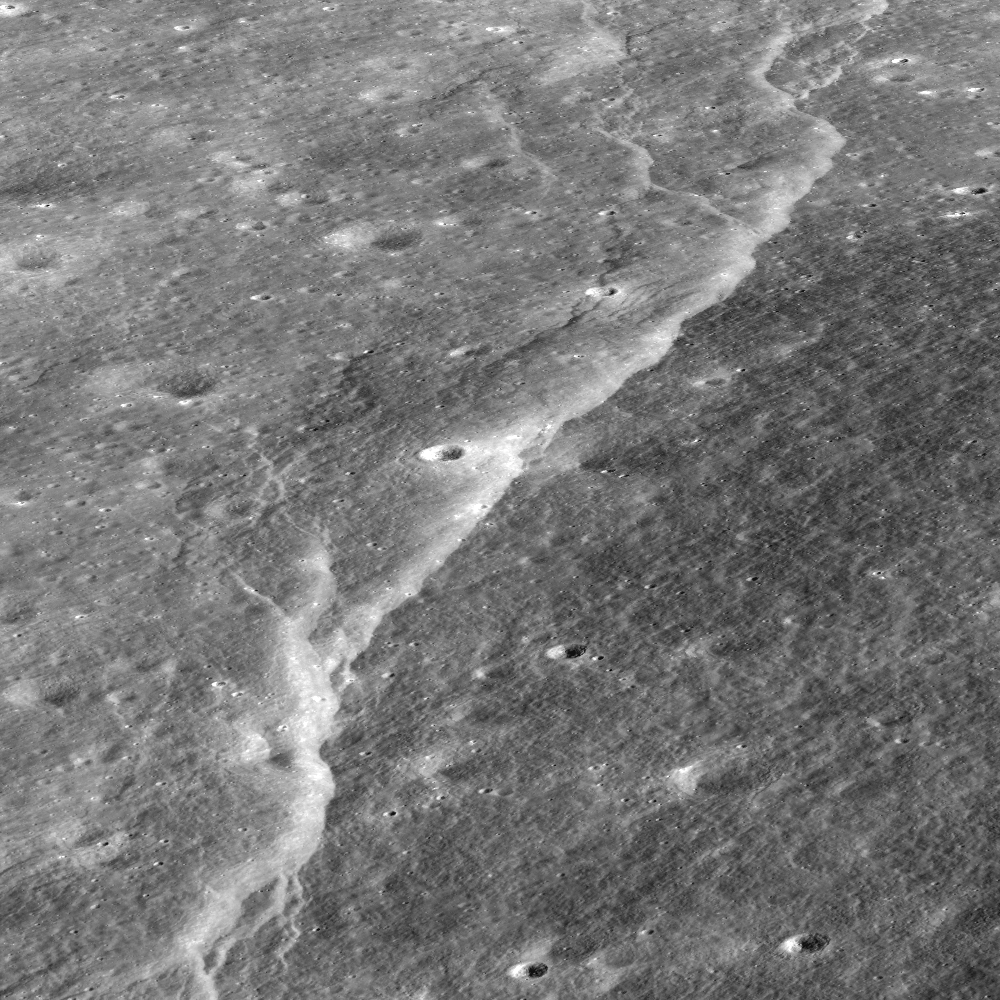
Slipher Crater: Fractured Moon in 3-D
Over time, the surface of the Moon fractures and buckles as it cools and shrinks, resulting in spectacular landforms. Stereo images provided by the LROC NAC allow a detailed look at these amazing features; view is to the east,...
Published on 12 Oct 2010
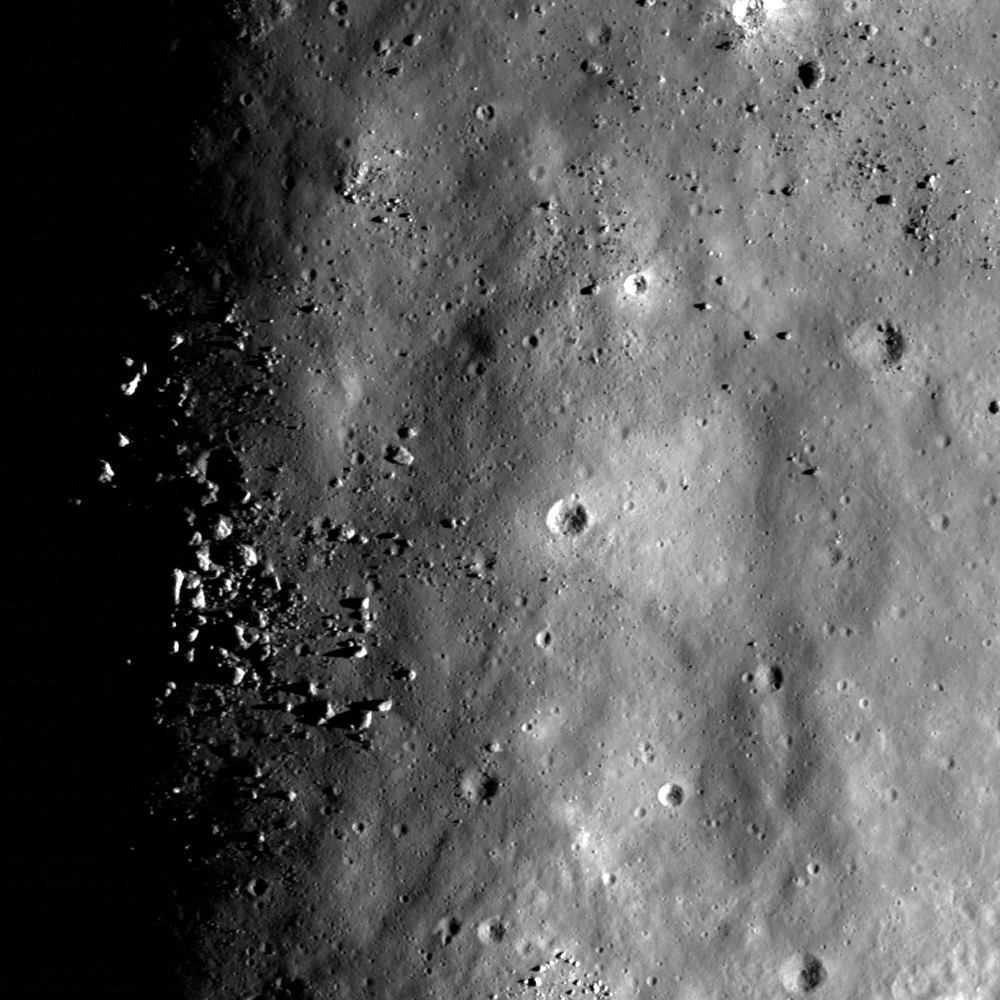
Eratosthenes Central Peak
Sunrise image of the Eratosthenes central peak summit. LROC NAC image M131725388L; width is 600 m [NASA/GFSC/Arizona State University].
Published on 08 Oct 2010

Terraces in Eratosthenes Crater
Like many complex craters on the Moon, Eratosthenes exhibits terraces (upper left) within its rim. Terraces form as the walls of the crater slump down, creating a landslide while leaving the upper portion of the wall intact. LROC NAC...
Published on 07 Oct 2010
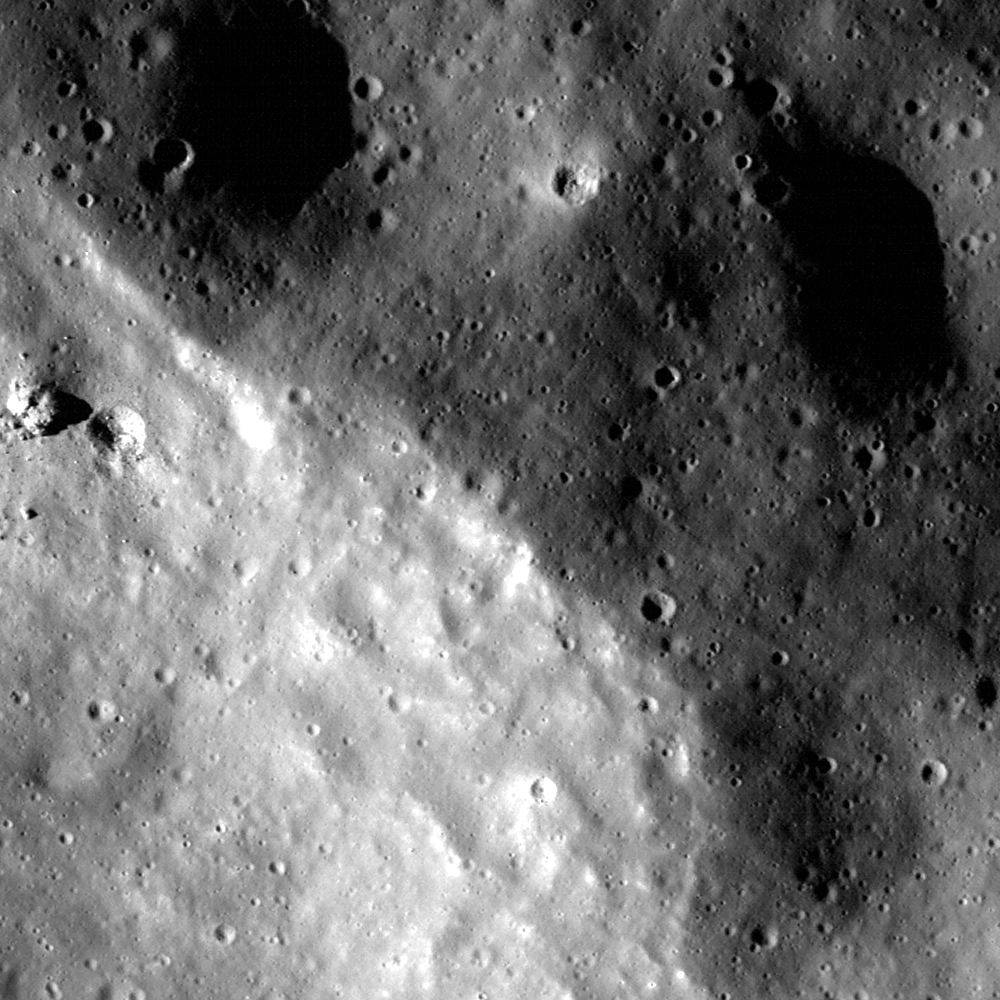
Eratosthenes Crater and the Lunar Timescale
The northeast rim of Eratosthenes crater is easily seen as the change in reflectance due to differing slopes - higher reflectance terrain in the lower left is the steeply sloping interior. LROC NAC image M117562615L, image width is 600...
Published on 06 Oct 2010

The Lunar North Pole
Summer-time at the lunar north pole captured by the LROC Wide Angle Camera (WAC), width ~600 km, latitude ranges from 80°N to 90°N [NASA/GSFC/Arizona State University].
Published on 05 Oct 2010
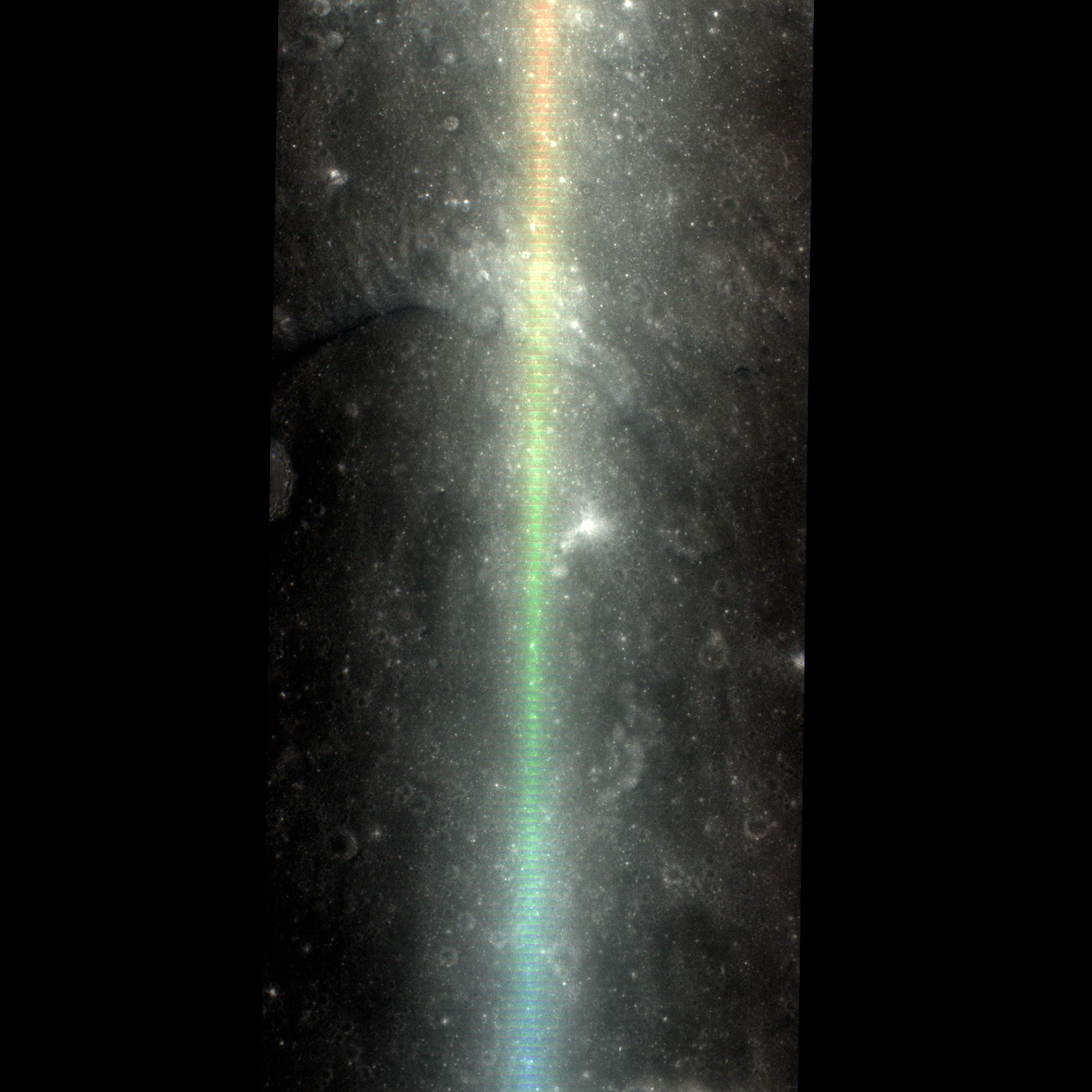
Rainbows on the Moon
With the Sun exactly overhead, the illumination conditions and viewing angles of the LROC WAC create a rainbow effect in this image. 689 nm filter in red, 643 nm filter in green, and 604 nm filter in blue, from image M109168446C. Scene...
Published on 01 Oct 2010
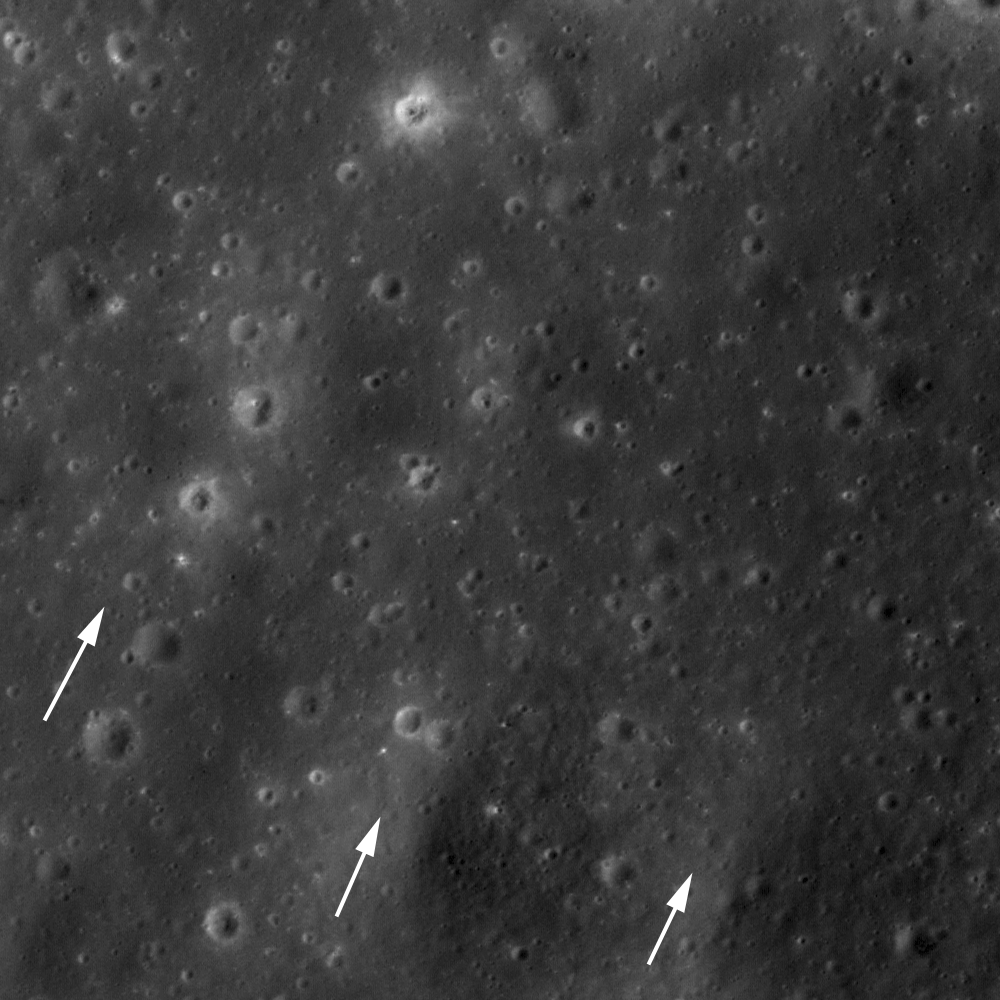
Ejecta from Copernicus
One of the geologic features that makes Copernicus crater special is its extensive, high-reflectance ejecta rays that extend across nearby mare and superpose (overlap) ejecta from other craters - Copernican ejecta extends more than 500...
Published on 30 Sep 2010
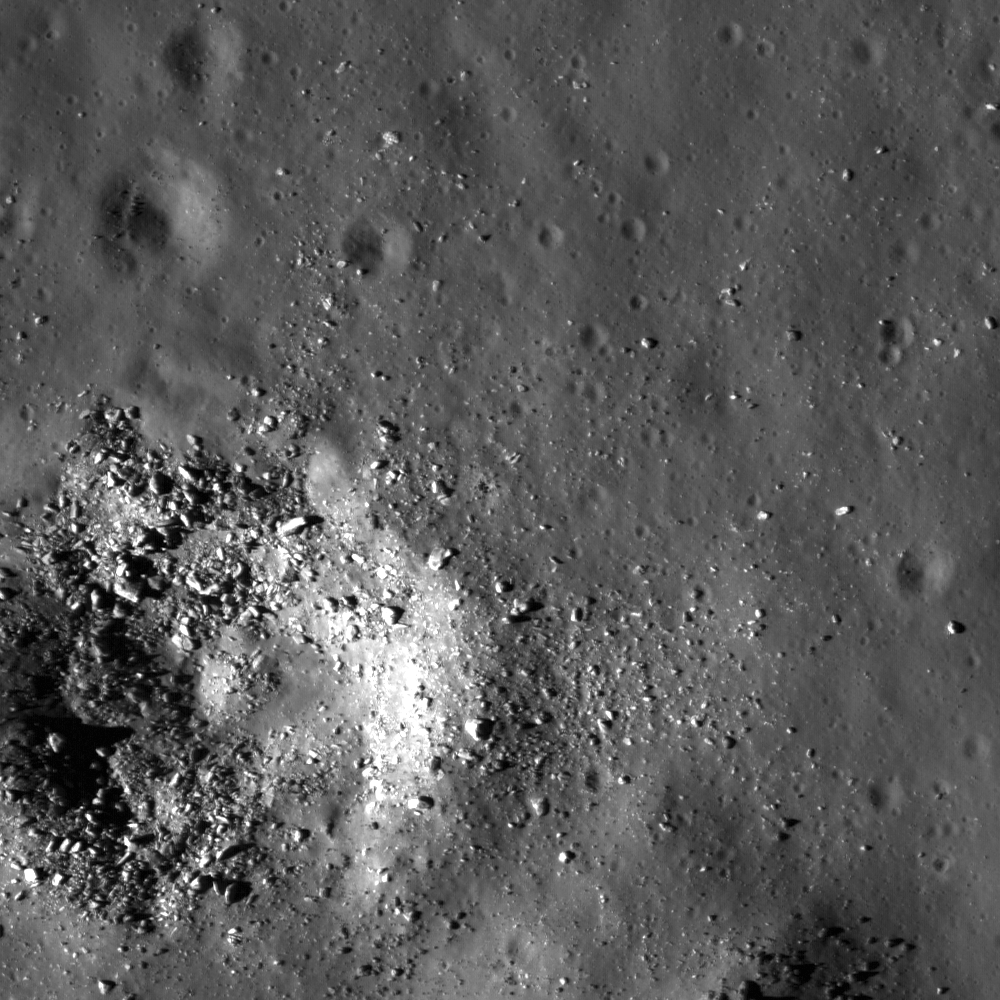
Smooth floor in Copernicus crater
With the exception of recent impacts (such as this one) into the floor material of Copernicus, much of the northwestern floor of Copernicus appears smooth and relatively featureless (upper right corner). This region on the crater floor...
Published on 29 Sep 2010
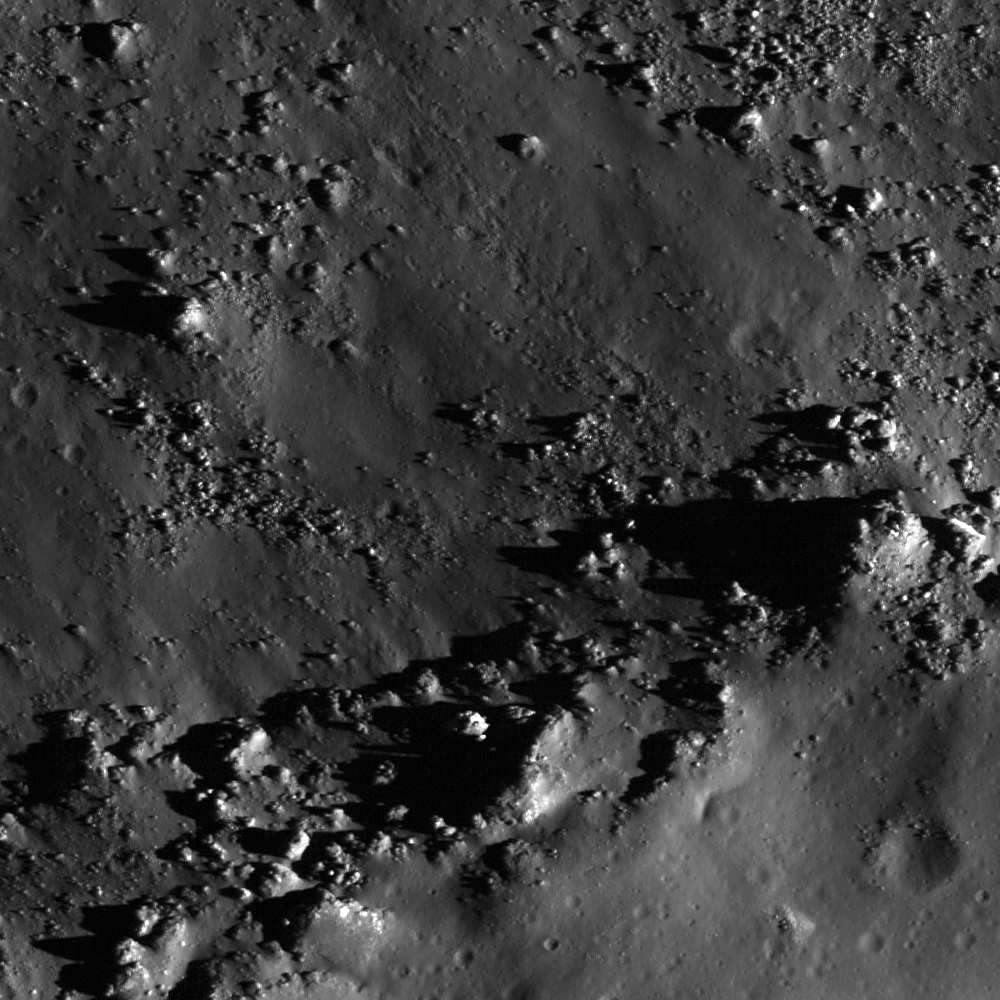
Copernicus Crater and The Lunar Timescale
LROC NAC view of the southern rim of Copernicus crater. Downslope direction is to the upper left and the fragmented material demarcates the rough edge of the crater rim. The surface texture is still sharp and crisp indicating a...
Published on 28 Sep 2010

The Lunar South Pole
LROC Wide Angle Camera (WAC) mosaic of the south polar region, width ~600 km [NASA/GSFC/Arizona State University].
Published on 27 Sep 2010

Ejecta Blanket
The pattern of ejecta from a young crater is still preserved on the floor of Van de Graaff crater. The variations in albedo (bright and dark areas in the ejecta) indicate either different surface exposure times, grain sizes, or...
Published on 23 Sep 2010
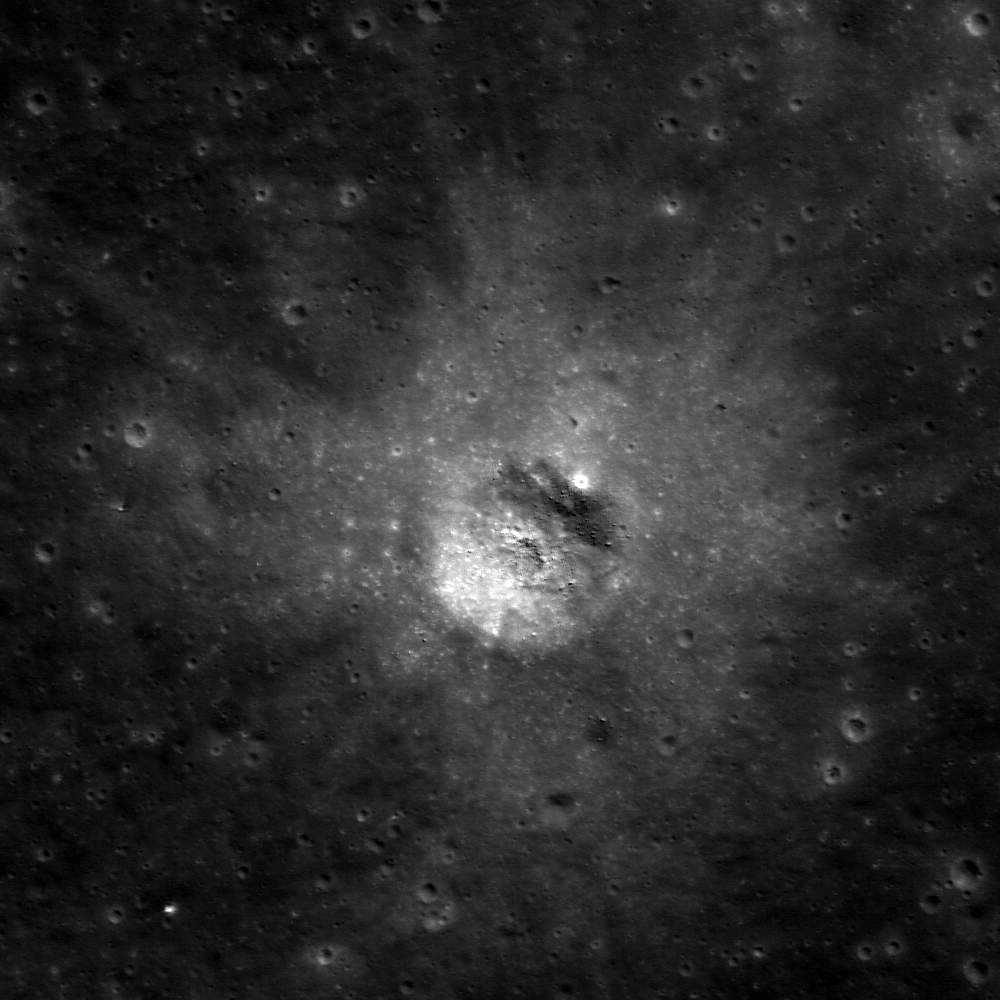
Immature Ejecta
This crater in the floor of Van de Graaff crater has a high reflectance ejecta blanket compared to the surrounding low reflectance material. The contrast in albedo is due to the crater excavating "fresh" or "immature" material from...
Published on 22 Sep 2010
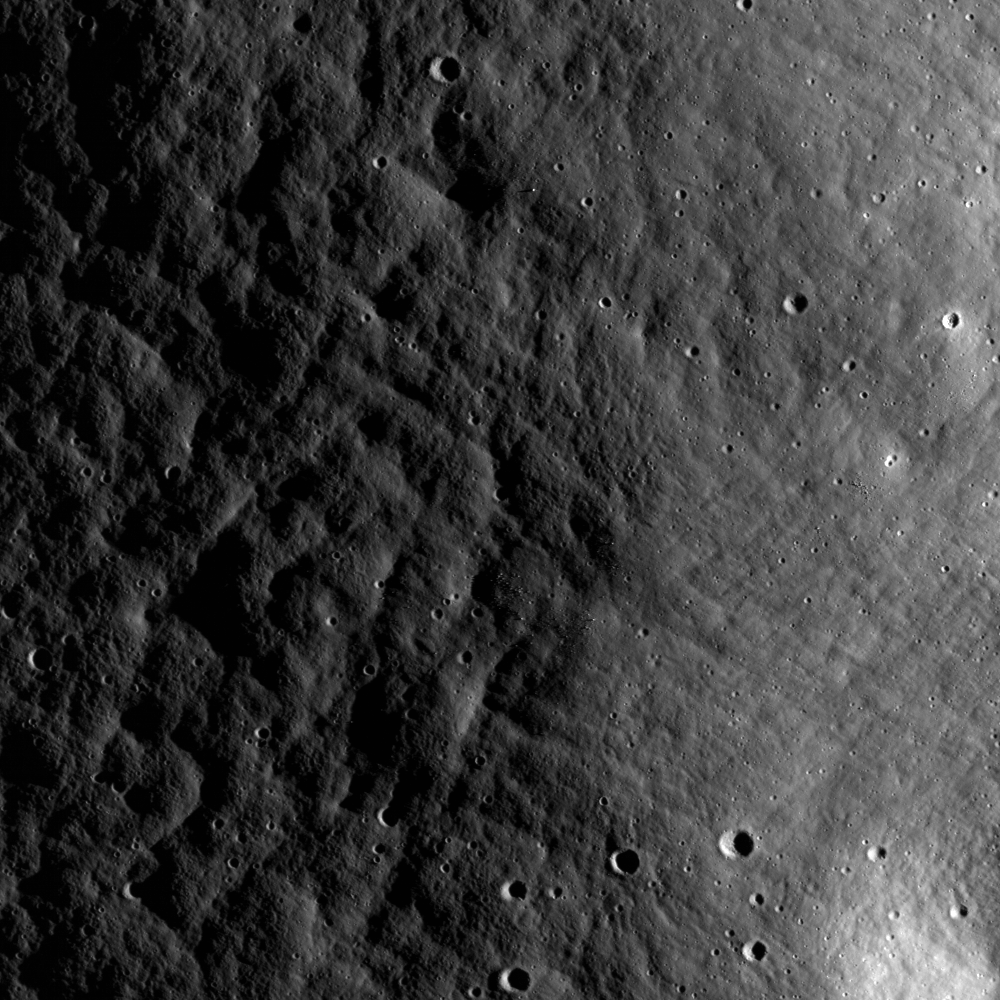
Ejecta from Van de Graaff Crater
The texture of ejecta thrown from Van de Graaff Crater along the northern rim, seen from a low Sun angle in the NAC image (incidence angle is 72°). This subset of the NAC image M115177455R has a width of 980 m [NASA/GSFC/Arizona State...
Published on 21 Sep 2010

Americas from the Moon
The western hemisphere of our home planet Earth. North (upper left), Central, and South America (lower right) were nicely free of clouds when LRO pointed home on 9 August 2010 to acquire this beautiful view! LROC NAC E136013771...
Published on 15 Sep 2010
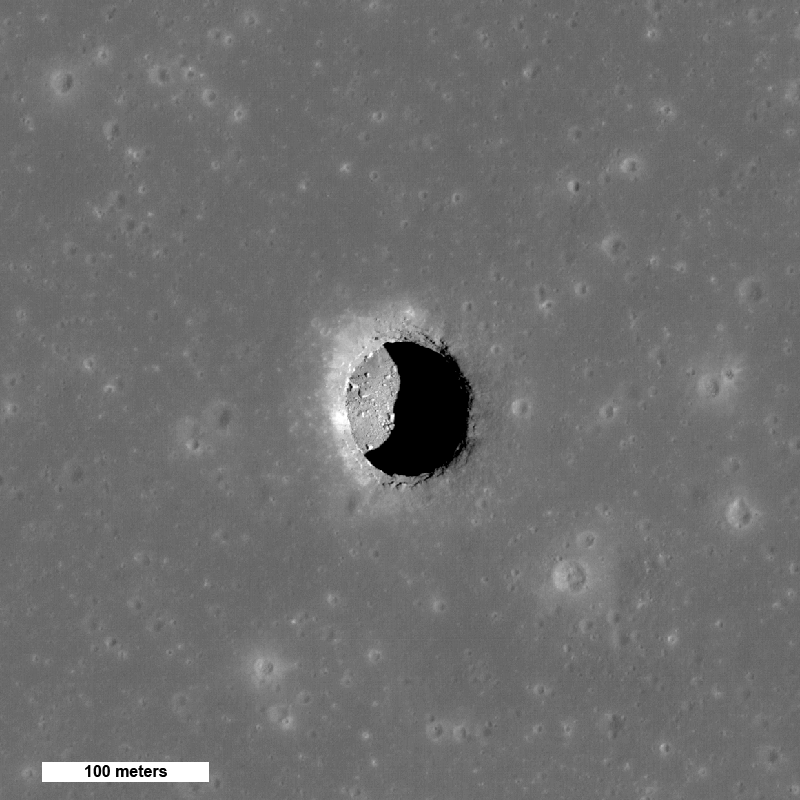
New Views of Lunar Pits
Spectacular high Sun view of the Mare Tranquillitatis pit crater revealing boulders on an otherwise smooth floor. Image is 400 meters wide, north is up, NAC M126710873R [NASA/GSFC/Arizona State University].
Published on 14 Sep 2010
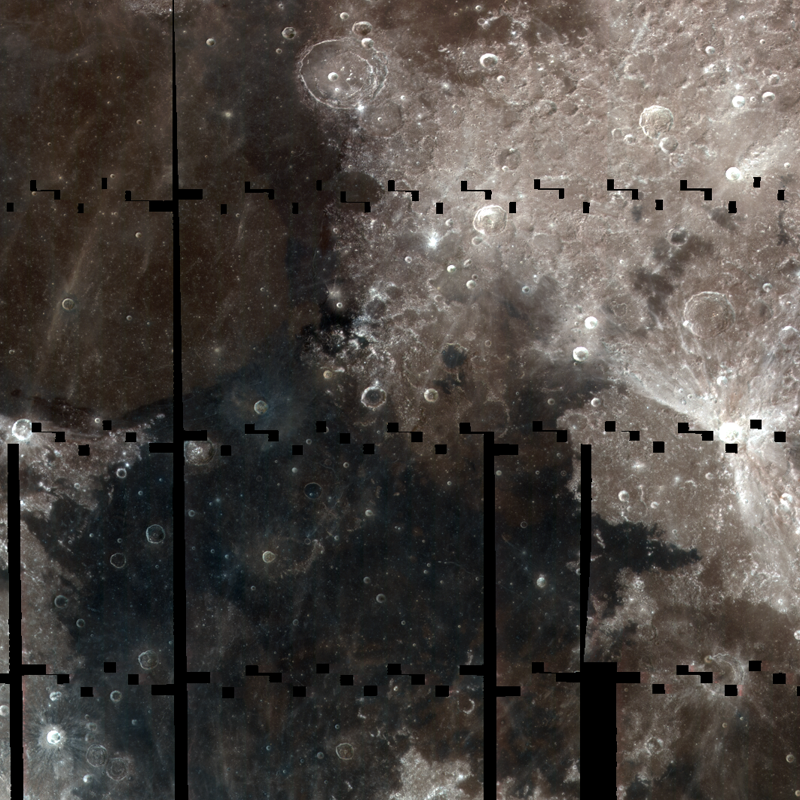
Color of the Moon
The LROC WAC is busily mapping the Moon in 7 UV and visible wavelengths (320 nm through 689 nm). This color composite shows 320 nm light in blue, 415 nm in green and 689 nm in red, scene is ~1000 km wide [NASA/GSFC/Arizona State...
Published on 10 Sep 2010
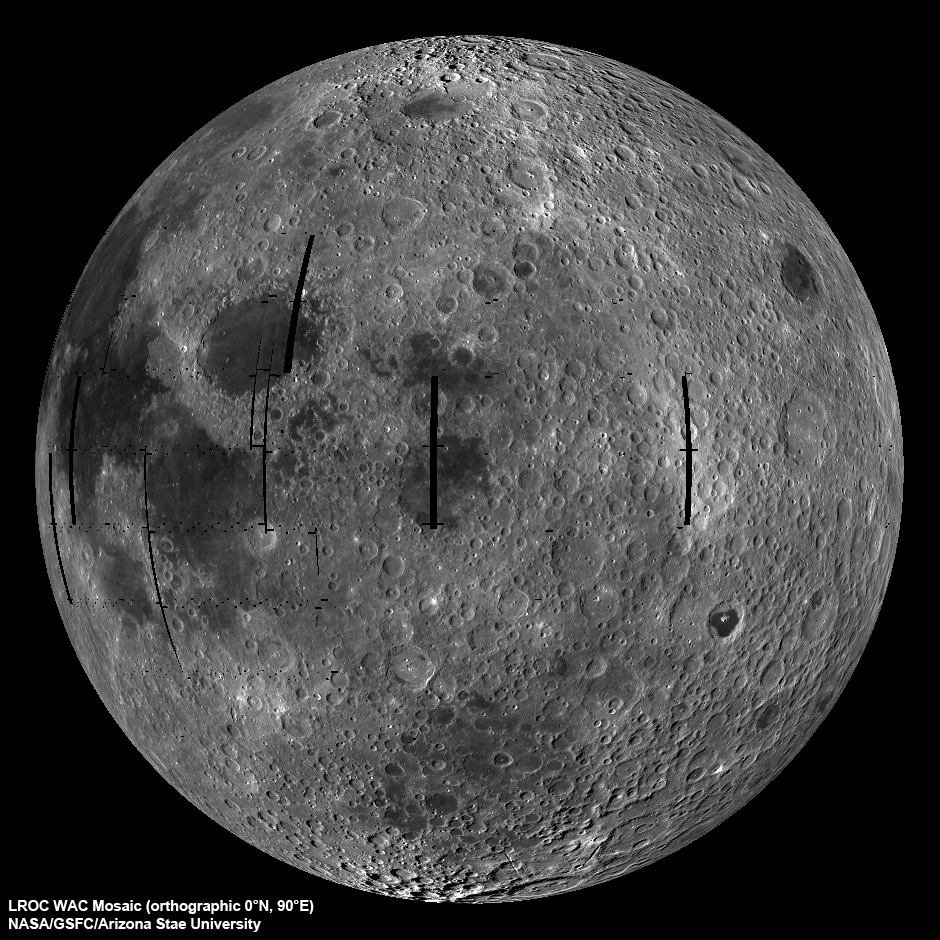
Moon Seen From the East
LROC Wide Angle Camera (WAC) view of the Moon seen from 90° east longitude. Half the nearside is visible to the left, and half the farside to the right [NASA/GSFC/Arizona State University].
Published on 08 Sep 2010

Natural Bridge on the Moon!
Another amazing bit of lunar geology revealed by LROC! NAC M113168034R, north is up [NASA/GSFC/Arizona State University].
Published on 07 Sep 2010
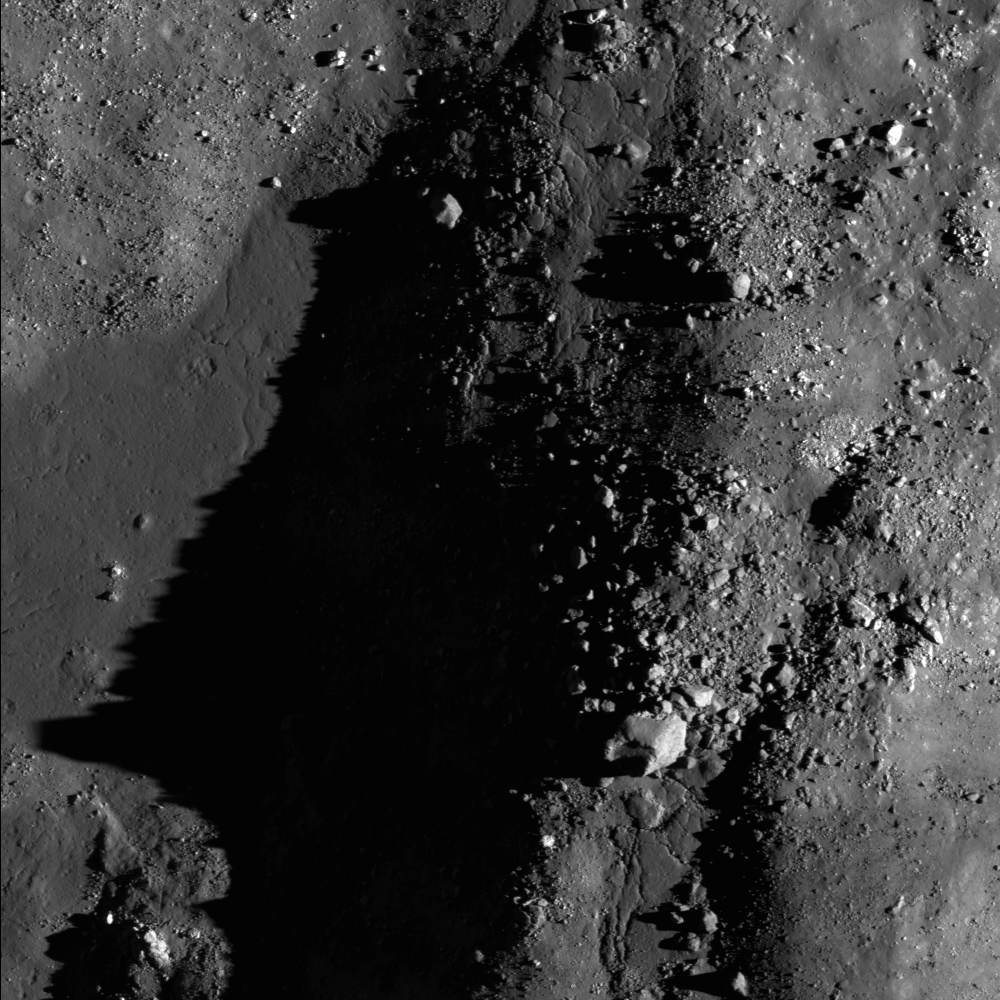
Necho's jumbled floor
The chaotic floor of Necho crater attests to the dynamic environment immediately after the impact event. NAC image M115502787R, scene is 960 m across [NASA/GSFC/Arizona State University].
Published on 02 Sep 2010

Impact melt at Necho crater
Impact melt that flowed from the rim shortly after the formation of Necho crater. NAC image M134374642R, scene is 620 m across [NASA/GSFC/Arizona State University].
Published on 01 Sep 2010